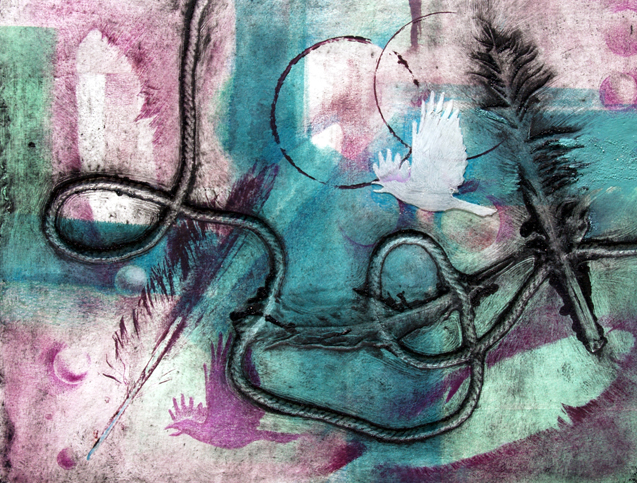Ever worry about bothering people with your emails or postcards?
You’re not alone. And there’s nothing wrong with wanting to do right by your trusted fans. You know what it’s like to receive tons of email and don’t want to contribute to the overwhelm.
Even though everyone on your list has opted in to hear from you, it still doesn’t feel right to email so many people so frequently. I get it. And …
There’s a solution to this dilemma: Send emails only to whom they are appropriate.
In other words, target your messages to the people who want and need to hear from you rather than sending every email to every person on your list.
Email marketing platforms like Constant Contact, MailChimp, and Emma have the capability to segment an email list. Depending on your platform, you might find these features under Groups, Segments, and/or Tags. Some platforms use multiple names.
If you haven’t used this feature, the first step is to research how to segment a list inside of your email platform of choice. It’s worth it even if you have to pay a little for it.
After you’ve done that, you can make your list more useful by segmenting it in multiple ways.
7 Ways to Slice and Dice Your List
Your list segments will vary based on the messages you are sending, but these are the 7 types of segmenting that I suggest frequently to my Art Biz Success clients.
1. Interests
If you make more than one line of work, consider dividing your list according to customer interests. For example, combine jewelry patrons together in one group and functional pottery patrons in another.
This doesn’t mean that you won’t email both interest lists at the same time, or that a contact can’t belong to both groups. It only means that you have the capability to personalize emails in the future.
2. Buyers of Specific Products or Services
If you make online sales and can find a way to connect your online shopping cart to your email platform, do it!
At Art Biz Success, it’s easy for us to pull up every person who has purchased I’d Rather Be in the Studio directly from me or attended Art Biz Breakthrough. This is because all of our sales are processed online through a system that combines shopping cart, email delivery, and customer management.
You may not have your online shopping cart plugged into your customer or email management program but it’s possible to link the two using services like IFTTT or Zapier, which we use for other purposes at Art Biz Success.
Group everyone who purchases your e-book in one list and those who buy your iPhone cases in another. This allows you to send product updates, offers, or bonuses to specific purchasers who are using and loving your art and products.
3. Collectors
Collectors are people who have purchased more than one work of art from you. I’m not talking about people who have purchased 50 greeting cards from you, but about those who have purchased multiple original works of art.
These people top your list of VIPs that you want to treat especially well. To do this, you must be able to identify them quickly.
Perhaps they are grouped by dollars spent or by number of works purchased. How you make the distinction is up to you.
4. Students
Teaching is a service rather than a product, as your art is. And selling a service is different from selling fine art.
The communication you have with students might cross over with what you share with collectors, but there are undoubtedly numerous times when it’s appropriate to email only students.
Because of this, you’ll get better results by grouping students together on your list and further segmenting them according, perhaps, to their learning levels, geographical location, and interests.
5. Location
It’s unlikely you’ll know where people live when they sign up for your email list online. Over time, however, you will accumulate more information, including physical addresses when people buy from you.
This is valuable information to have.
Segmenting your list by geography comes in handy when you have a local show, participate in arts festivals, or teach out of state.
While students may travel longer distances for one of your sold-out workshops, it doesn’t feel right to email customers 800 miles away with a reminder to attend your opening tomorrow night. Chances are almost zero that they’ll hop on a plane to attend – no matter how much they love you and your art. (Sorry.)
Better to group by geographical location and send reminders only to the exact people who are most likely to take action.
6. Date
There may come a point in time where you’d like to contact everyone who has purchased from you within a certain time period. Likewise, it might be useful to email all new subscribers within the past 6 months.
To segment by date, there must be a date field or an “anniversary” date (the date in which the contact was added) in your email system.
7. Birthday
This is another piece of information that you might not have right away, but could add to your list over time. At the end of every month, pull up birthdays for the next month and send one of your lovely note cards to those who are another year older.
Power Up Your List
Your mailing list is your #1 asset, but it’s absolutely worthless unless you expand it and use it.
I can help!






8 thoughts on “7 Ways to Segment Your Mailing List and Make It More Useful”
While I certainly understand the value of segmentation and targeted marketing, I also believe in cross marketing. I’m guessing that, when segmenting, you are also making patrons for, say, one service, aware of another ….
Mary: You can do both – for sure. But there are times when you only want to email one segment, such as a class reminder.
I maintain separate lists for my painting, sculpture, my husband’s Sumi-e, and an over all list for both of us (All News). At art shows, I try to note the interest directly in my guest book with a small note after the client has left, asking only those who seem very interested (but havenif they would like to be on my mailing list and sign the book. My website NL sign-up form has the same division of interest. You are right – I too can usually get only a name (first and last) and e-mail these days, if anything at all. The full contact info comes in only with sales, so note activity is limited to those. Mail Chimp makes it easy to divide up into segments, and doesn’t duplicate e-mails if someone is on more than one list.
Good work on getting those interests noted, Marianne.
My online list is split into newsletters, workshops only, metalwork of the month, and into different show categories based on location. My master list (that includes people who receive mailings but not emailings) is further split into whether or not people have purchased work, bought my book, or taken workshops. (I also have family/friends/neighbors marked out.) Using the master database I can break everything down into what ever bits I want to use for a particular mailing.
Nice, Wendy.
I segment my list into types of work people have purchased or asked about a certain type of work (prospects). I started makin gmy newsletters more personal and although sales have been slow lately, I do get positive comments about the newsletters. Sometimes it takes 2-3 months between newsletters. I wonder when I have time to work on sculpture. Alyson, thank you for your tips.
Keep up the good work, Joy.